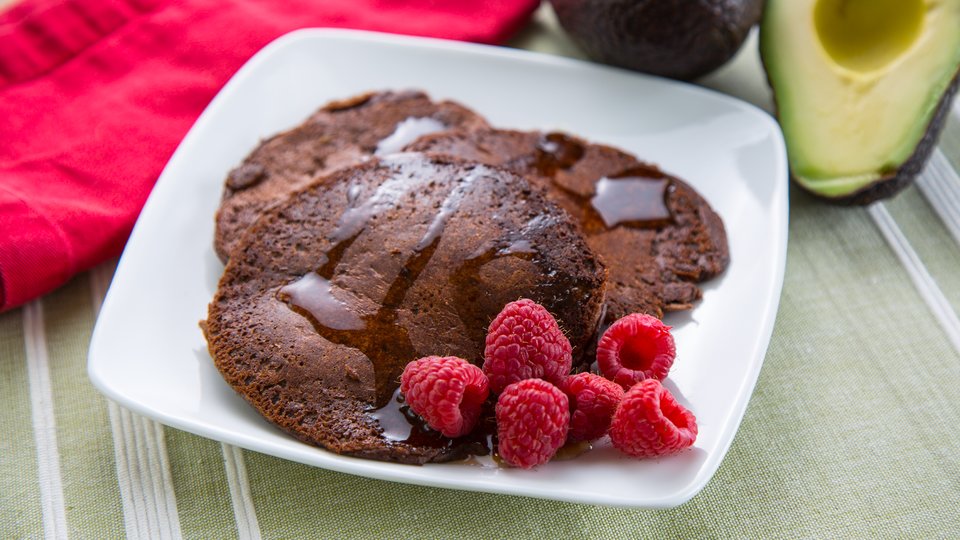3 Ways to Eat Chocolate | 3 Ways to Eat Cottage Cheese | 3 Ways to Eat Peanut Butter | 3 Ways to Eat Lentils | 3 Ways to Eat Bananas | 3 Ways to Eat Avocados | 3 Ways to Eat Winter Squash | 3 Ways to Spice Up Meals
The flesh of the ripe avocado berry (yes, it’s a berry!) offers a creamy buttery texture that, when mashed, makes an irresistible corn chip dip or spread for your morning toast. But this fruit is no slouch when it comes to good nutrition. Once avoided because of its high fat content, the avocado is now praised for the “good” fat it provides.
Here’s why it’s time to recast the avocado as a bright star of the fruit aisle (even though it’s usually over with the vegetables).
Fat Fighter
Who knew that something so full of fats could actually help keep the flab at bay? Despite the berry’s high calorie count, people who make it a regular part of their diet tend to have healthier body weights and smaller waists. This could be due to the synergy of the more than 20 essential vitamins and minerals found in avocados, or to the possibility that people who eat them tend to make healthier food choices.
A 2013 study published in Nutrition Journal found that people who ate avocados regularly also improved the quality of their diets, thanks to the avocado’s heavy load of healthy fats, fiber, vitamin E, and magnesium.[1]
Healthy Heart Protector
Eating avocados can keep your heart beating strong, too. A meta-analysis published in the Journal of Clinical Lipidology determined that avocado-rich diets can lower total cholesterol levels, reduce low-density lipoprotein cholesterol (the “bad” cholesterol), and decrease blood triglyceride levels.[2]
The study’s authors suggest that eating more avocado can help protect your heart from disease—especially if you use avocado as a substitute for less heart-healthy saturated and trans fats. Roughly two-thirds of all the fat present in avocado is monounsaturated fat, which can improve the levels of good cholesterols and fats in your blood.
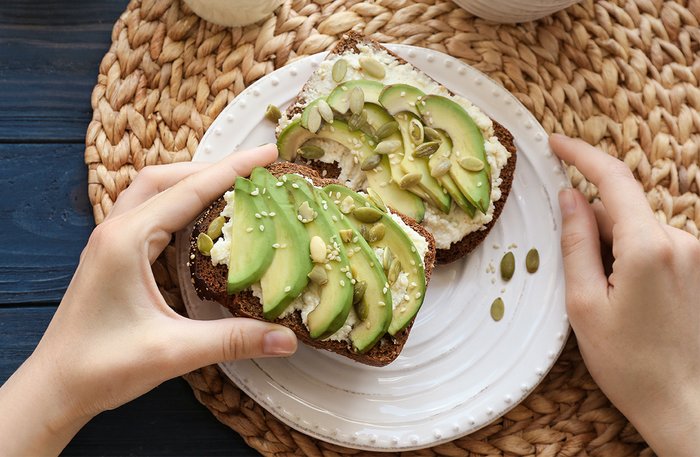
Hunger Tamer
One of the biggest obstacles many people face when fighting the battle of the bulge is keeping hunger at bay. When you crave food all the time, you’re more likely to be tempted by junk food and large portions. Avocados to the rescue again! Researchers at Loma Linda University have found that study subjects who were served a lunch that included half an avocado reported a 26 percent increase in meal satisfaction and a 40 percent decrease in the desire to eat within three hours.[3]
The avocado did add 112 calories to the subjects’ meals, but the great taste, dietary fiber (about 7 grams in half a fruit), and good-for-you fats can help you stay on the path to clean eating and a beach-ready six-pack.
Pick a Good one
In addition to their health-enhancing benefits, avocados also produce antioxidants that can help reduce the risk for everything from Alzheimer’s to cataracts. Something so good for you should be a staple part of just about anyone’s diet, but you’ve got to know how to choose the right specimen.
To determine if an avocado is recipe-ready, pull off the stem at the top. If you see green underneath, the fruit is at its creamy best. If the flesh is brown, it’s getting overripe and should be used soon. An avocado is ready to eat immediately when it is firm to the touch, with just a slight give when you squeeze it. (Squeeze it very gently or you’ll bruise the flesh).
Mushiness to the touch and dents in the skin are two indicators that this big, savory berry is past its prime. Rather than pick an overly ripe avocado, choose one that’s a little on the firm side, put it in a paper bag with an apple or banana, and check periodically until it’s just right.
To remove the pit, strike it with the sharp edge of a knife, give the knife a quick turn, and strike the pit against the side of a bowl to dislodge it from the knife.
Green Goddess Dressing
Avocado and punchy herbs team up to make a creamy, tangy dressing that’ll leave you craving your next salad. Plus, research shows that adding the quality fat found in avocado to vegetables like tomatoes and carrots can boost your absorption of fat-soluble antioxidants, including beta-carotene.
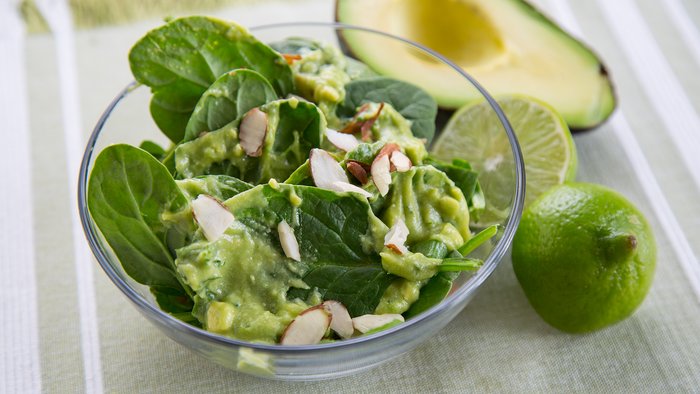
Avocado Tuna Melt
Breathe new life into this diner classic. By using tuna instead of fatty hamburger, you’ll meet your protein macros without overloading on grease. The avocado base adds a creamy texture, and the Gruyere tops the whole sandwich off with gooey, cheesy goodness!
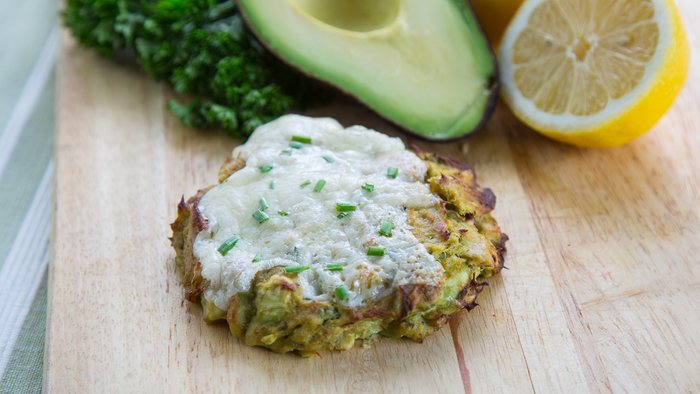
Chocolate Fudge Pancakes
Avocado gives these dessert-like pancakes a creamy fudge consistency. The batter won’t spread like typical pancake batter, so be prepared to spread it out with a spatula or spoon. Try topping the finished pancakes with raspberries and a drizzle of pure maple syrup. The batter can be made in advance and kept in the refrigerator for up to two days.
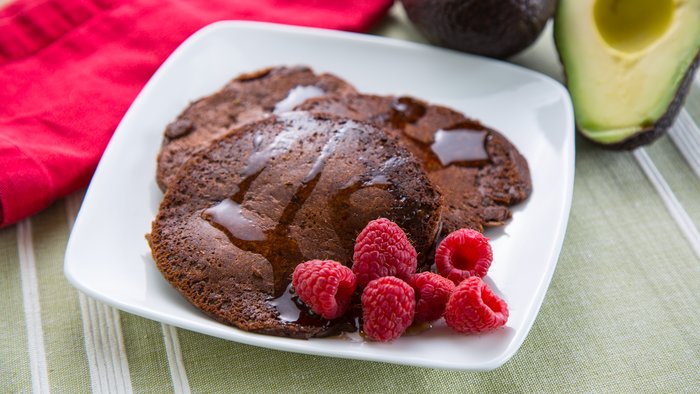
References
- Fulgoni, V. L., Dreher, M., & Davenport, A. J. (2013). Avocado consumption is associated with better diet quality and nutrient intake, and lower metabolic syndrome risk in US adults: results from the National Health and Nutrition Examination Survey (NHANES) 2001–2008. Nutrition Journal, 12(1), 1.
- Peou, S., Milliard-Hasting, B., & Shah, S. A. (2016). Impact of avocado-enriched diets on plasma lipoproteins: A meta-analysis. Journal of Clinical Lipidology, 10(1), 161-171.
- Wien, M., Haddad, E., Oda, K., & Sabaté, J. (2013). A randomized 3×3 crossover study to evaluate the effect of Hass avocado intake on post-ingestive satiety, glucose and insulin levels, and subsequent energy intake in overweight adults. Nutrition Journal, 12(1), 155.
